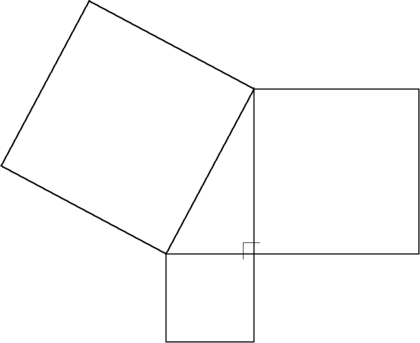Pythagorean theorem: Difference between revisions
Jump to navigation
Jump to search

imported>Michael Hardy (David Martin's edit introduced errors. It is stated that way in high-school textbooks, but I think the traditional way is better in all respects that I can think of. See Wikipedia's article on this.) |
imported>Michael Hardy (illustration added) |
||
| Line 1: | Line 1: | ||
[[Image:Pythagorean.png|thumb|420px|'''The Pythagorean theorem''': The sum of the areas of the two squares on the legs (the sides that meet at a [[right angle]]) equals the area of the square on the hypotenuse (the side opposite the right angle).]] | |||
In [[Euclidean geometry]], the '''Pythagorean theorem''' states that the sum of the areas of the squares on the legs of a [[right triangle]] equals the area of the square on the [[hypotenuse]]. | In [[Euclidean geometry]], the '''Pythagorean theorem''' states that the sum of the areas of the squares on the legs of a [[right triangle]] equals the area of the square on the [[hypotenuse]]. | ||
Revision as of 21:04, 15 May 2007

The Pythagorean theorem: The sum of the areas of the two squares on the legs (the sides that meet at a right angle) equals the area of the square on the hypotenuse (the side opposite the right angle).
In Euclidean geometry, the Pythagorean theorem states that the sum of the areas of the squares on the legs of a right triangle equals the area of the square on the hypotenuse.